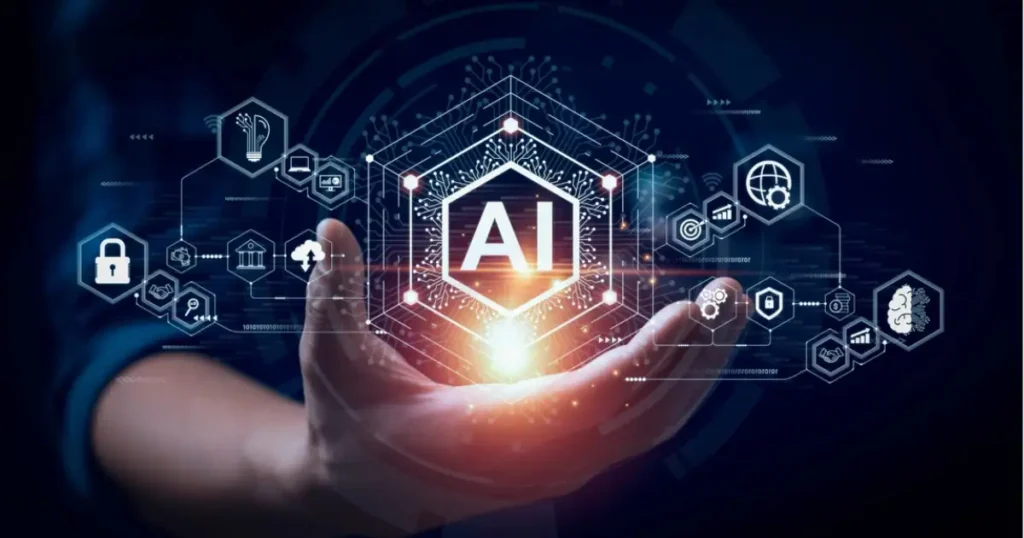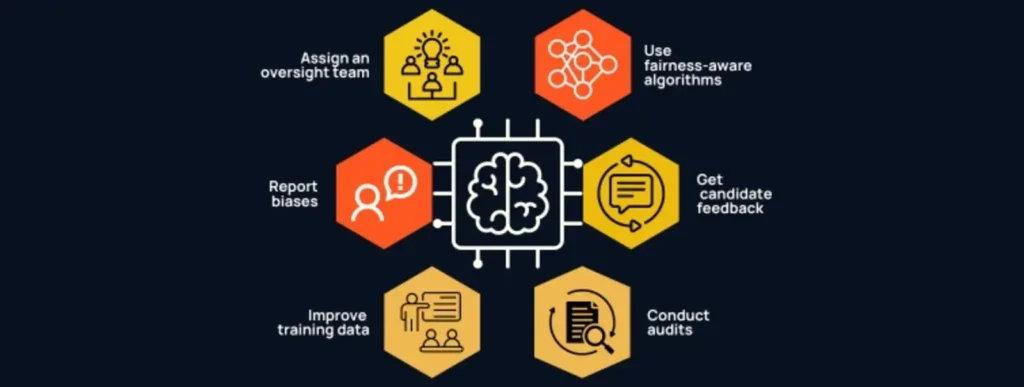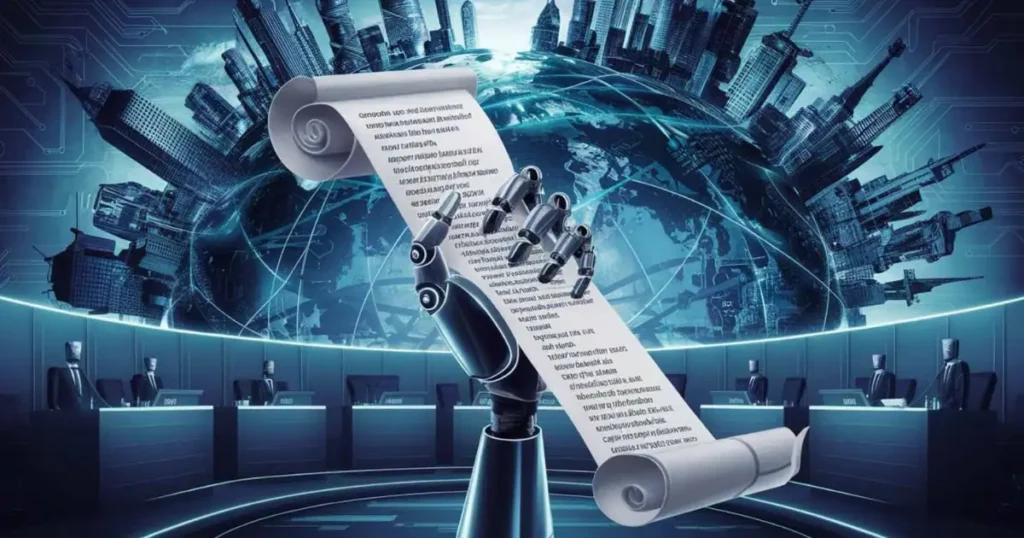Artificial Intelligence (AI) is revolutionizing industries, but as it grows more powerful, concerns about ethics and bias are increasing. AI models learn from vast datasets, and if that data contains biases, the AI can amplify discrimination, leading to biased hiring, unfair loans, and racial or gender disparities in facial recognition.
To build fair and responsible AI, we need diverse datasets, unbiased algorithms, and strong regulations. Governments, tech companies, and researchers must collaborate to promote fairness and accountability while minimizing bias.
This blog series explores key challenges, ethical design, regulations, and solutions for making AI fair for everyone while addressing AI ethics and bias in technology.
The Root Causes of AI Bias and How to Identify Them
AI models are trained on large datasets, but if those datasets contain historical biases, the AI will reflect them. For example, if past hiring data favors men over women, an AI hiring tool may also unintentionally discriminate against women. Bias can emerge from skewed data collection, flawed algorithms, or human prejudice during AI development. Ensuring fairness requires a strong focus on ethical AI practices, as addressing AI ethics and bias in technology is crucial for creating transparent, accountable, and unbiased systems.
1. How AI Systems Learn and Develop Bias

AI models are trained on large datasets, but if those datasets contain historical biases, the AI will reflect them. For example, if past hiring data favors men over women, an AI hiring tool may also unintentionally discriminate against women. Bias can also emerge from skewed data collection, flawed algorithms, or human prejudice during AI development.
2. Real-world examples of AI Bias
Several cases highlight the dangers of AI bias. In healthcare, some AI systems prioritized white patients over Black patients for medical care due to biased training data. Facial recognition technology has also been found to misidentify people of color at higher rates, leading to wrongful arrests. These examples show how biased AI can cause serious harm if left unchecked.
3.Case Study: Amazon’s AI Hiring Bias
Amazon developed an AI-powered recruitment tool to automate hiring processes. However, the AI favored male candidates over females due to historical hiring data that reflected gender bias in the tech industry. The system downgraded resumes containing the word “women” and prioritized male-dominated experience. This case highlights the risks of biased training data in AI decision-making. Amazon eventually scrapped the project, emphasizing the need for diverse datasets and fairness auditing, as highlighted in a Reuters Report.
4. Methods to Detect AI Bias
Detecting bias in AI requires careful data analysis and fairness testing. Techniques like counterfactual testing—changing one variable such as gender or race to see if the AI’s decision shifts—can uncover hidden biases. AI fairness tools such as IBM’s AI Fairness 360 and Google’s What-If Tool support developers in auditing models. As the demand for addressing AI ethics and bias in technology increases, focusing on AI bias detection, ethical AI development, and fair decision-making in AI systems is becoming essential to ensure transparency and trust.
5. Tools and Techniques for Bias Auditing

Companies and researchers use bias auditing frameworks to test AI for fairness. Common methods include:
- Data Diversity Checks: Ensuring the dataset represents all groups fairly.
- Algorithmic Audits: Evaluating how AI models make decisions.
- Human Oversight: Keeping humans involved in AI decision-making to catch biases early.
Strategies for Creating Fair and Ethical AI Systems
AI has the power to shape society, but if not built ethically, it can reinforce discrimination and injustice. To ensure AI is fair, transparent, and accountable, developers must use responsible practices throughout its lifecycle. Here are key strategies to reduce bias and promote ethical AI development.
1. Importance of Diverse and Representative Datasets
AI learns from data, so if the data is biased, the AI will be too. To create fair AI, datasets should accurately represent different demographics, cultures, and experiences. For example, in facial recognition technology, training the model on a diverse set of faces reduces the risk of racial and gender bias.
2. Ethical AI Design Principles
Developers should follow core principles to build ethical AI:
- Fairness: AI should make unbiased decisions.
- Transparency: AI processes should be understandable.
- Accountability: Developers must take responsibility for AI’s actions.
- These principles help prevent harm and increase public trust in AI systems.
3. Role of Regulations and AI Governance
Governments and organizations are setting AI ethics guidelines to hold developers accountable. Laws like the EU AI Act and guidelines from the U.S. National Institute of Standards and Technology (NIST) aim to reduce AI risks. Companies should follow these regulations to ensure compliance and ethical responsibility.
4. Bias Mitigation Techniques in AI Models
There are several ways to reduce AI bias:
- Re-sampling Data: Adjusting imbalanced datasets to ensure fairness.
- Algorithmic Fairness Checks: Testing AI models for bias before deployment.
- Human-in-the-Loop (HITL): Keeping humans involved in decision-making to spot ethical concerns.
- Using these methods, AI can become more accurate and equitable for all users.
The Role of Government and Industry in AI Ethics Regulation

AI is advancing rapidly, but without proper regulations, it can lead to privacy violations, biased decisions, and unethical use. Both governments and industries play a crucial role in ensuring AI is fair, transparent, and accountable. This article explores how regulations, policies, and corporate responsibility can shape ethical AI development.
1. Overview of Current AI Regulations and Policies
Governments worldwide are introducing AI regulations to prevent harm. The EU AI Act categorizes AI risks and imposes strict rules on high-risk AI applications. The U.S. AI Bill of Rights outlines principles for privacy, transparency, and fairness. These policies help ensure AI serves the public good rather than causing harm.
2. Role of Governments in Shaping Ethical AI
Governments are responsible for setting legal and ethical standards for AI. They enforce data privacy laws, require bias audits, and promote human oversight in AI systems. For example, GDPR in Europe protects user data, ensuring AI does not misuse personal information. Strong legal frameworks help keep AI accountable.
3.Case Study: COMPAS Algorithm and Racial Bias in Criminal Justice:
The COMPAS (Correctional Offender Management Profiling for Alternative Sanctions) algorithm was used in the U.S. judicial system to predict recidivism rates. Investigations found that the system disproportionately flagged Black defendants as high-risk compared to white defendants, as shown in an analysis of Compas Bias even when controlling for similar backgrounds and offenses. This case underscores the importance of regulatory oversight and the dangers of unchecked AI in law enforcement.
4. Industry-Led Initiatives for Responsible AI Use
Tech companies are also taking steps to self-regulate AI ethics. Companies like Google, Microsoft, and IBM have developed AI ethics guidelines and introduced tools to detect and reduce bias. Many organizations are also adopting AI fairness frameworks to ensure their technology aligns with ethical standards.
5. Challenges in Enforcing AI Ethics Laws
Despite progress, enforcing AI ethics remains challenging. Rapid AI advancements often outpace regulations, making it hard for laws to keep up. Additionally, a lack of global standards means different countries have different AI rules, leading to inconsistencies. Governments and industries must work together to create stronger, more unified regulations.
How Companies Can Address AI Bias in Their Products
AI is shaping industries like healthcare, finance, and hiring, but biased AI can lead to discrimination, unfair decisions, and loss of public trust. Companies developing AI must take proactive steps to ensure their products are fair, transparent, and unbiased. Here’s how businesses can tackle AI bias effectively.
1. Ethical AI Best Practices for Businesses
To minimize AI bias, companies should follow ethical AI principles, including:
- Fairness: Ensuring AI treats all users equally.
- Transparency: Clearly explaining how AI makes decisions.
- Accountability: Taking responsibility for AI’s impact.
- By integrating these principles, businesses can build AI that is both ethical and effective.
2. Case Studies of Companies Tackling AI Bias
Some companies are leading the way in responsible AI development. For example, Google introduced an AI ethics board to oversee fairness in AI systems, while IBM’s AI Fairness 360 tool helps detect and reduce bias in machine learning models. These initiatives show that bias reduction is possible with the right strategies.
3. Importance of Explainability in AI Decision-Making
One major challenge in AI ethics is the black box problem, where AI decisions are difficult to interpret. Companies should invest in explainable AI (XAI), which makes AI decisions more transparent and understandable. This allows businesses to identify and correct biases before deployment.
4. Training AI Teams on Ethical Considerations
AI bias often stems from human oversight and unconscious bias in training data. Businesses should provide ethics training for AI developers, data scientists, and product teams. Ethical AI training ensures that AI models are designed with fairness and inclusivity in mind.
The Future of AI Ethics: Challenges and Opportunities
As AI continues to evolve, so do the ethical concerns surrounding it. Issues like bias, transparency, privacy, and accountability remain major challenges. However, advancements in AI ethics also present new opportunities to build fair, responsible, and inclusive AI systems. This article explores the future of AI ethics, key challenges, and possible solutions.
1. Emerging Trends in AI Ethics and Bias Prevention
AI ethics is becoming a global priority. Companies and governments are investing in fairness auditing tools, AI explainability techniques, and diverse datasets to reduce bias. The rise of AI governance frameworks, such as the EU AI Act, shows a shift toward greater accountability and ethical responsibility.
2. Role of AI in Self-Regulating Ethical Concerns
AI itself can help address ethical issues. Researchers are developing AI models that detect and correct bias in real-time. Explainable AI (XAI) tools also help developers understand and improve AI decisions. While AI cannot fully regulate itself, it can assist in creating fairer algorithms.
3. Potential Risks of AI if Ethics Are Ignored
Failing to address AI ethics can lead to serious consequences, such as:
- Discrimination: AI reinforcing societal biases in hiring, lending, and law enforcement.
- Privacy Violations: Unethical AI collecting and misusing personal data.
- Misinformation: AI-generated deepfakes and biased content influencing public opinion.
- Without ethical guidelines, AI could cause more harm than good.
4. The Importance of Human Oversight in AI Systems
Even with advanced technology, AI should never operate without human oversight. Ethical AI requires human intervention to detect bias, prevent unethical decisions, and ensure fairness. Companies must combine AI automation with human judgment to maintain accountability.
Conclusion: Shaping an Ethical AI Future
AI has the power to transform society, but without ethical safeguards, it can also reinforce bias, invade privacy, and create unfair systems. Addressing AI ethics and bias is not just a technical challenge—it’s a moral responsibility. Governments, businesses, and researchers must work together to build transparent, fair, and accountable AI that serves everyone equally. By implementing diverse datasets, fairness audits, explainable AI, and strong regulations, we can reduce bias and create more responsible AI systems. As AI continues to evolve, ethical considerations must remain a top priority to ensure that technology benefits society rather than harming it. The future of AI is in our hands—it’s up to us to make it fair and just.
Frequently Asked Questions (FAQs) on AI Ethics and Bias
1. What is AI bias, and why does it occur?
AI bias happens when an AI system produces unfair or discriminatory outcomes due to biased training data, flawed algorithms, or human oversight. It can result in unfair hiring practices, biased loan approvals, or racial/gender disparities in facial recognition.
2. How does biased data affect AI decision-making?
AI models learn from historical data, and if the data contains biases, the AI can reinforce them. For example, if an AI hiring tool is trained on past data where men were favored for leadership roles, it may continue to prefer male candidates over women.
3. Can AI bias be completely eliminated?
While AI bias cannot be fully eliminated, it can be significantly reduced through diverse datasets, algorithmic audits, fairness testing, and human oversight. Responsible AI development focuses on minimizing bias to create fairer and more transparent systems.
4. How can AI developers detect and mitigate bias in their models?
Developers use fairness auditing tools like IBM AI Fairness 360 and Google’s What-If Tool to analyze AI models for bias. Techniques such as re-sampling datasets, counterfactual testing, and human-in-the-loop (HITL) approaches help improve AI fairness.
5. What does the future hold for AI ethics and bias prevention?
The future of AI ethics depends on collaboration between governments, tech companies, and researchers. New fairness frameworks, explainable AI (XAI) tools, and stricter regulations will help shape responsible AI development, ensuring it benefits society without reinforcing discrimination.





